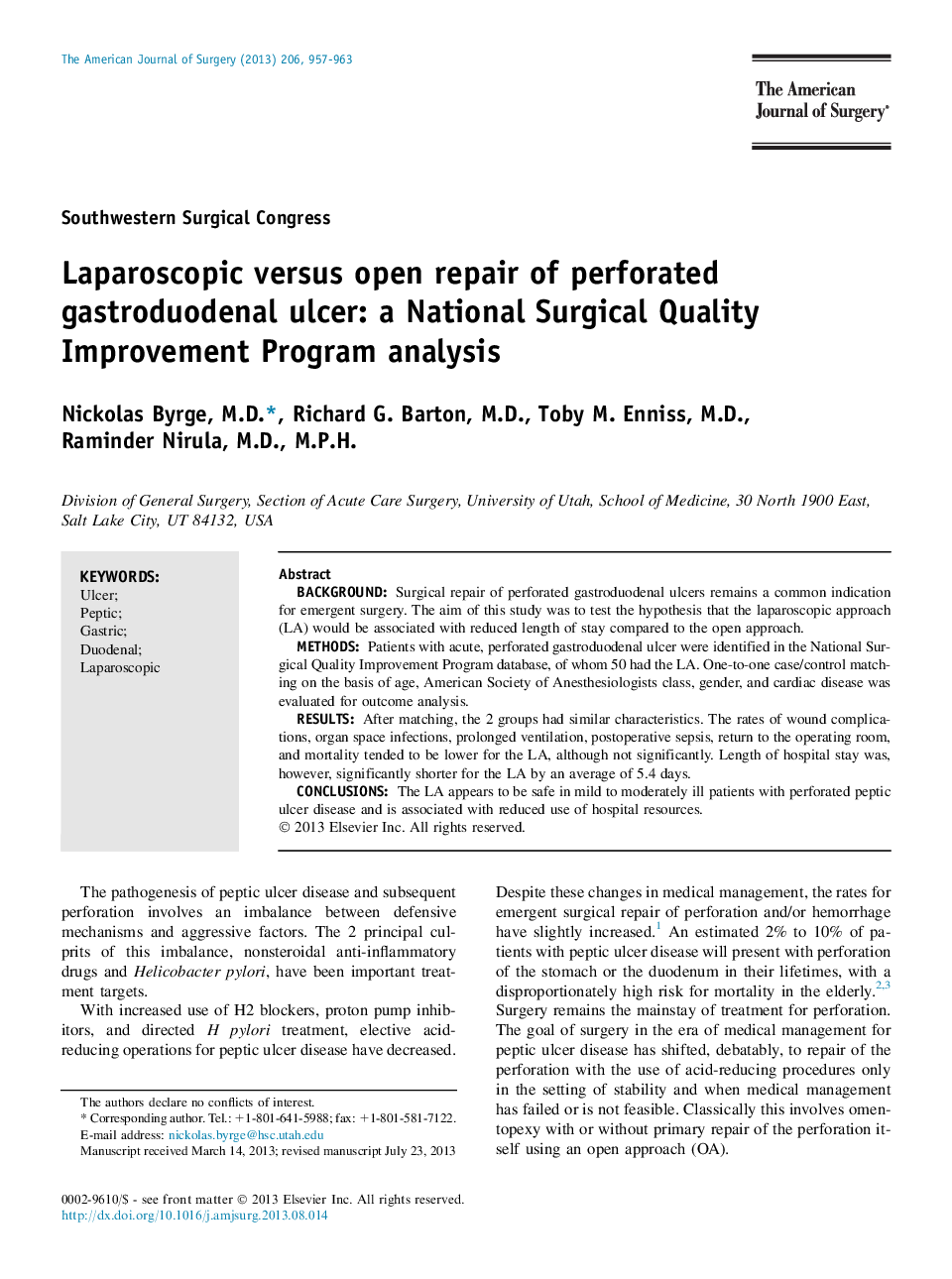| Article ID | Journal | Published Year | Pages | File Type |
|---|---|---|---|---|
| 4279364 | The American Journal of Surgery | 2013 | 7 Pages |
BackgroundSurgical repair of perforated gastroduodenal ulcers remains a common indication for emergent surgery. The aim of this study was to test the hypothesis that the laparoscopic approach (LA) would be associated with reduced length of stay compared to the open approach.MethodsPatients with acute, perforated gastroduodenal ulcer were identified in the National Surgical Quality Improvement Program database, of whom 50 had the LA. One-to-one case/control matching on the basis of age, American Society of Anesthesiologists class, gender, and cardiac disease was evaluated for outcome analysis.ResultsAfter matching, the 2 groups had similar characteristics. The rates of wound complications, organ space infections, prolonged ventilation, postoperative sepsis, return to the operating room, and mortality tended to be lower for the LA, although not significantly. Length of hospital stay was, however, significantly shorter for the LA by an average of 5.4 days.ConclusionsThe LA appears to be safe in mild to moderately ill patients with perforated peptic ulcer disease and is associated with reduced use of hospital resources.
